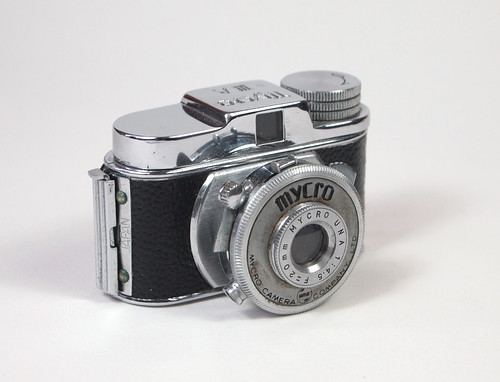 |
| Mycro IIIA camera |
The movement away from contact printing to enlarging negatives in the first half of the 20th century led to cameras in general becoming much smaller, especially once the 'miniature' format of 35mm became more widely used. The price of film itself was also a factor, especially in Japan after the Second World War, which produced by far the greatest number of
subminiature cameras (while perhaps also leading in part to the perfection of miniaturised manufacturing techniques). The first widely-used subminiature film format was 17.5mm, derived from splitting unperforated 35mm film; there had been some, essentially isolated, precedents such as the
Ticka watch camera from the early years of the 20th century, and 17.5mm film had also been used as a motion picture format in amateur cine cameras. In the years immediately following the Second World War, there were numerous 17.5mm format '
Hit-type' cameras (named after one of the most ubiquitous models), most featuring a fixed-focus, single-aperture lens with a single-speed shutter; the more sophisticated 17.5mm cameras had faster lenses, shutters with a limited range of speeds - and a select few even had focussing lenses. Most were modelled on typical 35mm camera designs, but some were inspired by medium format twin-lens reflex cameras. The majority of these cameras were sold to the US market as novelties. The use of 16mm film in still cameras overtook paper-backed 17.5mm film; a few rare cameras were available that took both formats, but as a subminiature format, 16mm film in cassettes appears to have supplanted 17.5mm by the late 1950s, with cameras that were generally better made, had more features, and were less novelties, more intended for serious amateurs. These 16mm cameras were themselves to be replaced by Kodak's introduction of the
110 cartridge just over a decade later.
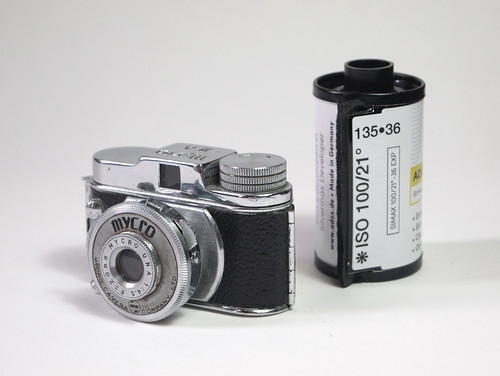 |
| Mycro IIA with 35mm canister for size comparison |
The original version of the
Mycro camera was introduced by Sanwa in 1939, two years after the
Midget, the first camera to herald the 17.5mm craze, on which it is closely modelled. It has similar dimensions: about 50mm wide, and 32mm in height and depth. The above image gives an indication of its size; having seen many images of the Mycro online, I still was not quite prepared for how small the camera was when I first held it in my hand. There were a number of Mycro variants, including a 16mm format camera, before the final version, the IIIA from 1953. There were also a number of accessories: ever-ready cases (mine came with a slightly battered case); lens hoods and filters, and combined lens-hood-and-filters; tripods and tripod adaptors; developing tanks and enlargers. Common with all Mycro cameras, the Mycro IIIA has a fixed-focus 20mm Una lens, stated to provide focus from feet feet; this is coated in the post-war models, and stops down to f11 on the underneath of the lens. Shutter speeds are 1/100th, 1/50th and 1/25th, as well as 'B' setting, on the top of the lens, and the camera also has a cable release socket. The shutter requires cocking, with the small toothed lever the left side of the lens from the user, with the shutter release itself in appearance reminiscent of a cocking lever from a leaf shutter on a much larger camera. The viewfinder is small but when put right against the eye, is clearer in use than one might expect.
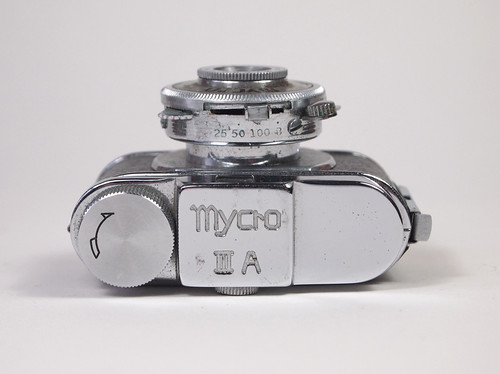 |
| Mycro IIIA top plate |
As the Hit-type cameras were very popular for a brief period, it's still not too difficult to find original 17.5mm rollfilm; a number of different manufacturers made film for the cameras, and the rolls do appear to be interchangeable. The metal spools have a slot in one end, meaning that the take-up spool can only be inserted into the camera one way up, not dissimilar to the design of 127 spools. I bought a handful of Kiku-branded films: the
Kiku was another 17.5mm camera, with a different body design from the classic Hit-type. Although there was nothing to securely identify the date of the films, given the period during which 17.5mm cameras were popular, the film is likely to be from the 1950s, but like with other uncommon formats, the film may well have been manufactured for many years after the cameras were no longer being made.
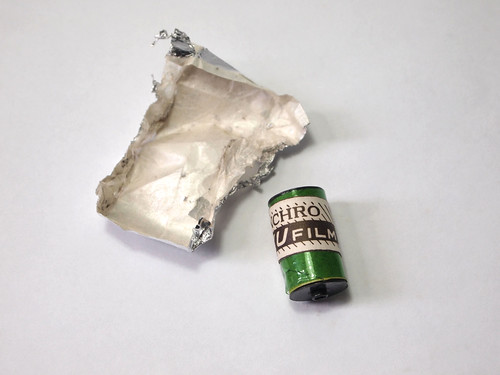 |
| Kiku Panchro film |
Film is advanced by means of a red window (in my camera this is a rather pale pink), which has a sliding cover; the standard format for 17.5mm was ten frames, nominally 14x14mm. Advertisements at the time suggested that these negatives could be enlarged to postcard size. Although the negatives are larger than most of the 16mm cameras which succeeded them, other factors may well be more important to the resulting images produced by the typical 17.5mm camera, notably the quality of the lens and film flatness. The Mycro IIIA has a curving film plane, a design feature often used in cameras with a simple lens to ensure better definition around the centre of the image; the Mycro also has a cradle for the supply side spool, which appears to have been used to keep the film taut by adding pressure to the roll, although this would lessen as more film is advanced.
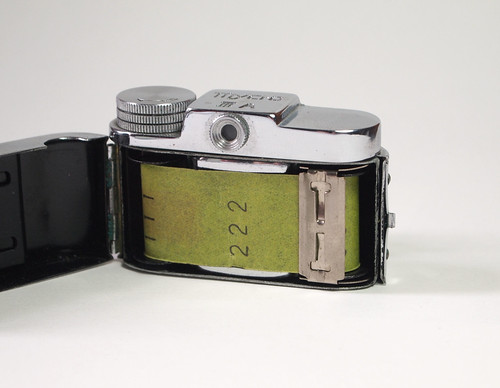 |
| Mycro IIIA with film loaded showing supply-side cradle |
I ran one of the Kiku films through the Mycro IIIA to test the camera and the films - these all appeared to be from the same batch, although one film later turned out to have a band identifying it as Panchro XX film - although the adhesive band on the exposed side neglected to specify this; perhaps all the films were identical, although I suspect that this was not the case, given the results and the different backing paper for the XX film. From the tests I made, the film appeared to be usable at an exposure index of 50; the camera's shutter had a tendency to stick open a 1/25th, and when set to 1/50th, the speed selector also tended to slide over to the 1/25th position by itself.
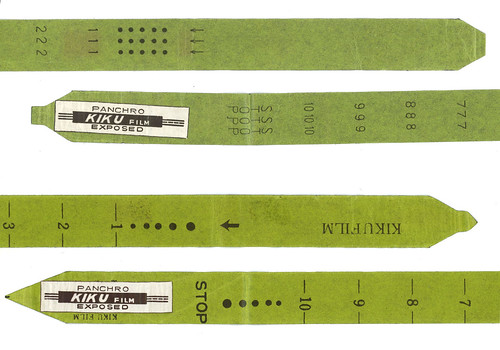 |
| Kiku rollfilm backing papers |
The test roll that I shot with the Mycro turned out to provide better results than the other films: the film marked as Panchro XX had the backing numbers transferred to the negatives, as can be seen on the right hand edge below. This roll was also less sensitive, with more fogging, and could have benefitted from more exposure.
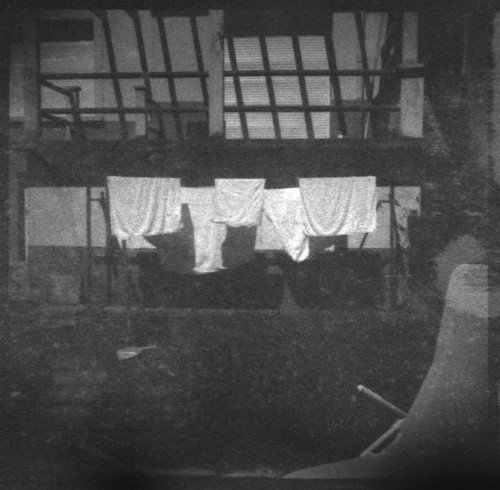 |
| Mycro IIIA with Kiku Panchro XX film |
On one of the other rolls, the sixty-year-old tape that held the film to the backing paper came loose inside the camera. This projected its shadow onto all the negatives from this roll, as seen in the image below - the tape is the large black shape upper left.
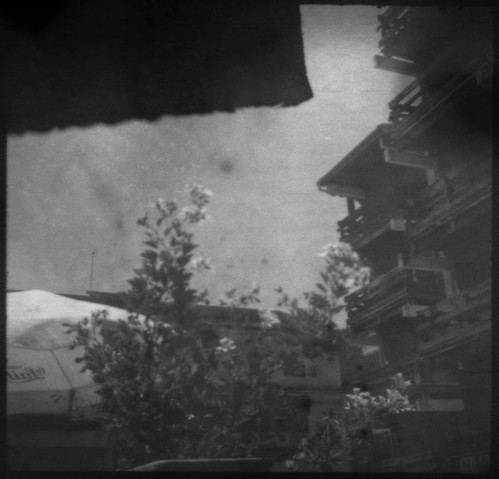 |
| Mycro IIIA with Kiku Panchro film |
The last original roll of Kiku film was perversely shot at night, mostly hand-held on 'B' - the photograph below might be an exposure of around a second, or possibly a double exposure. The Kiku film, although 17.5mm, did fit on the 16mm reels in my universal developing tank, and were stand developed for one hour in Ilfotec LC29 at 1+100. The image below does also show a fingerprint - the original Kiku films were difficult to load as these had a very pronounced curl.
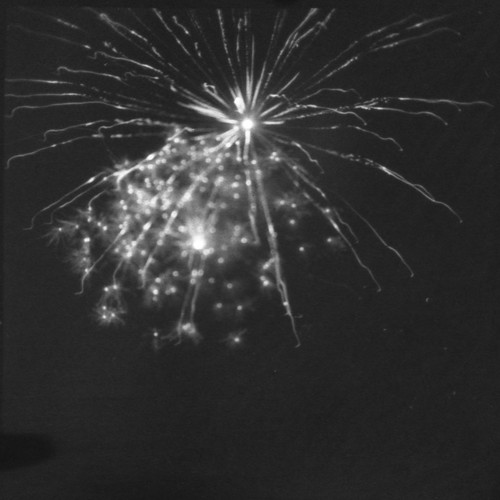 |
| Mycro IIIA with Kiku Panchro film |
Having the spools and backing paper, I also shot some FP4 and HP5 Plus, previously cut down to 16mm. These did show up some problems with focus in the images. This might have been due to the 16mm film not being held firmly to both sides of the curving film plane, as the out of focus area was mostly in the centre of the image, although this might not be the cause - it's clear on some negatives from the edges of the image that these were flush with the internal frame at both the top and bottom, but still appear soft in the middle, so some other cause may be to blame, however the film could still be bowing in towards the lens. Shooting on smaller apertures may have mitigated this to a degree in a number of images. The shots on FP4 and HP5 Plus also showed up the vignetting from the lens; having cut the 16mm film from 120 format, the printing on the edge of the film also intrudes into the image area.
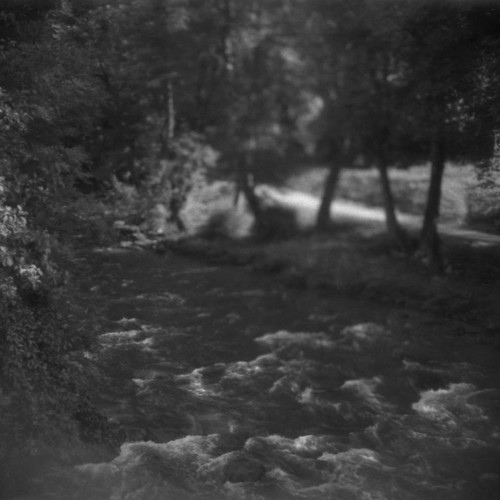 |
| Mycro IIIA with FP4 Plus |
Using the Mycro IIIA today is even more of a novelty as it would have been in the 1950s. Having an adjustable shutter and wider apertures than most 17.5mm cameras makes it more ambitious than a simple toy camera, although the camera has its limitations: it is small enough to be fiddly to use, and given the size of the film itself, loading the camera is not especially easy. However, although the results were a little unpredictable, some of the frames I shot do demonstrate the tiny camera's ability, and, in the 1950s, if one wanted a
very small snapshot camera, at a budget, which could make acceptable four-inch square prints, the Mycro would not have been a bad choice.
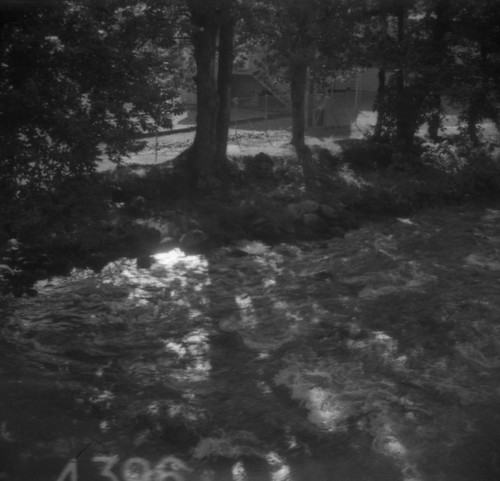 |
| Mycro IIIA with Ilford FP4 Plus |
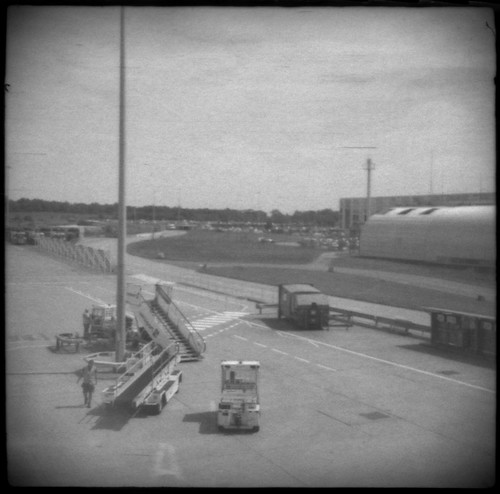 |
| Mycro IIIA with Ilford FP4 Plus |
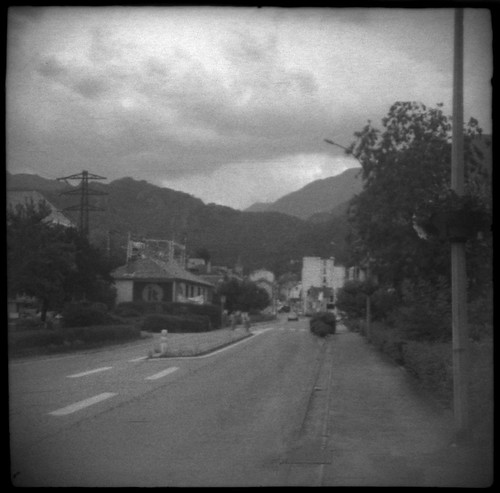 |
| Mycro IIIA with Ilford HP5 Plus |
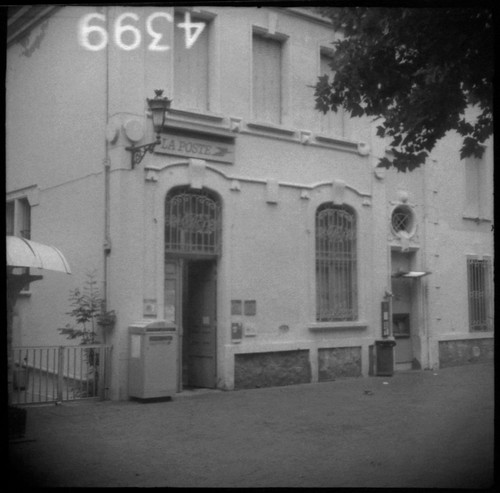 |
| Mycro IIIA with Ilford HP5 Plus |
Sources/further reading:
The Mycro camera on Camera-Wiki
Submin.com's pages on the Mycro
<ycro cameras on Subclub
The Mycro Camera Page
Mycro IIIA on the Living Image














Now that's guerrilla photography, spooling your own 17.5 mm!
ReplyDeleteI had no idea this format even existed. Thank you for introducing me to it!
Thanks! - From the little research I've done, it seems like 17.5mm was only really in use in the late 1940s - early 1950s - but maybe thanks to being a bit of a novelty format then, there's still a fair amount of film and cameras still around - and once you've got the spools and backing paper, it's not too difficult to use these cameras again.
Delete